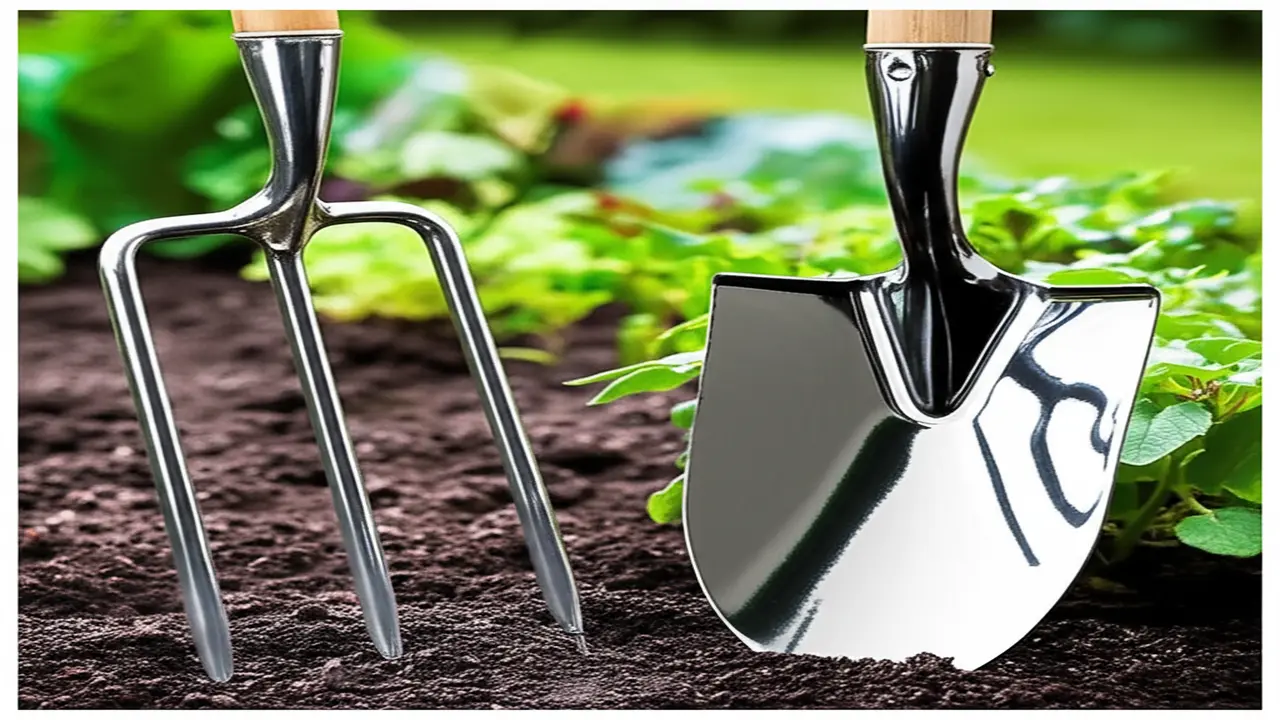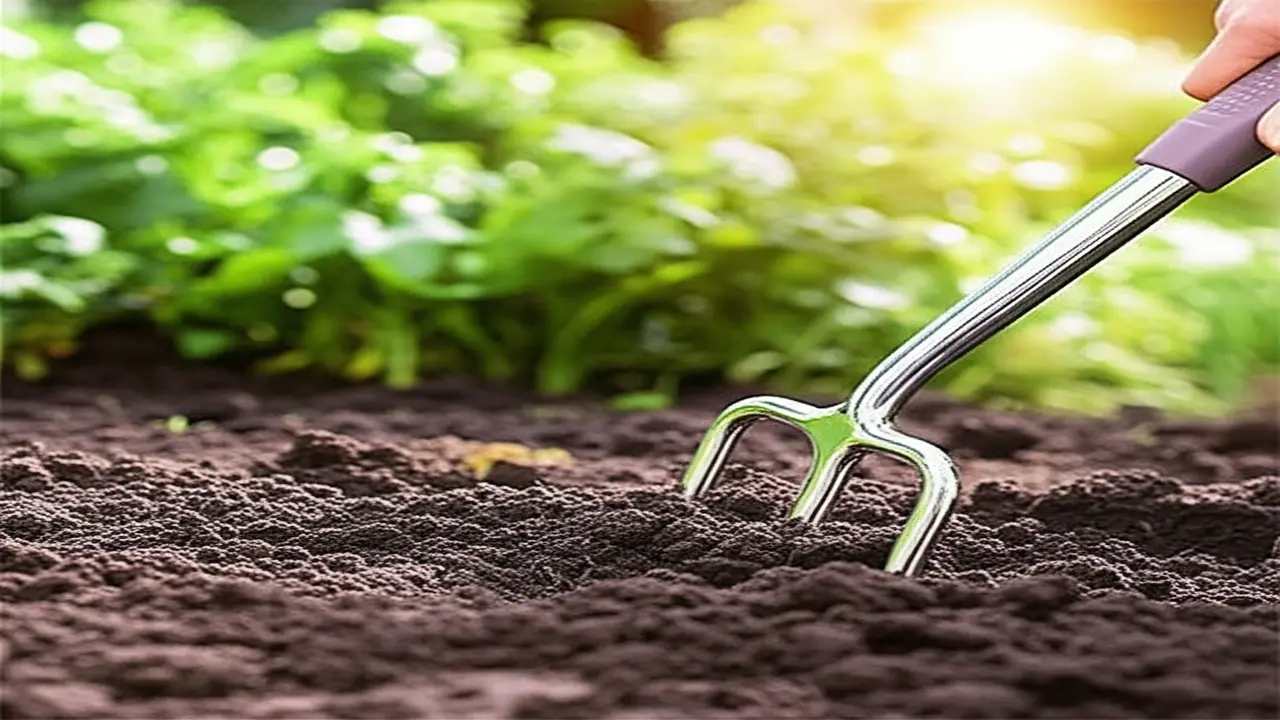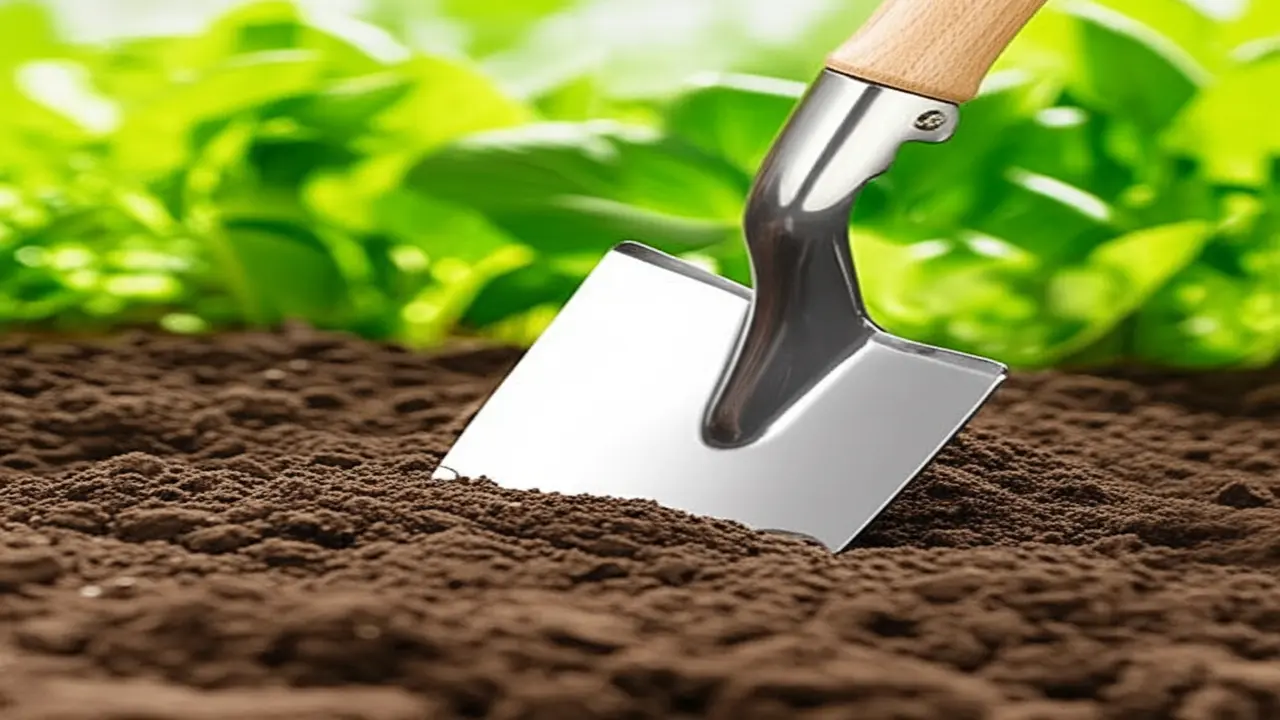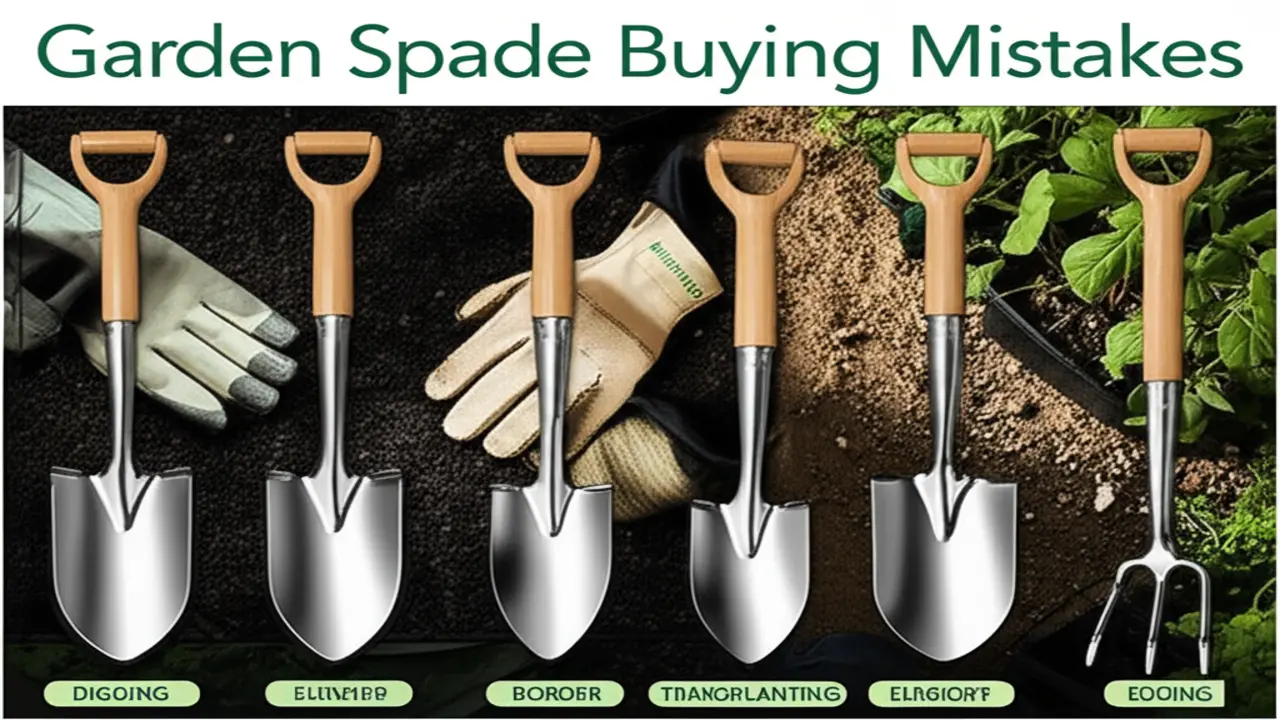Garden Fork vs Spade: The Ultimate Guide for Every Gardener in 2025
Choosing the right tool for your garden is fundamental to cultivating success. Every gardener, whether a beginner or a seasoned veteran, understands that a well-prepared soil bed forms the backbone of healthy plants and bountiful harvests. But when it comes to selecting between a garden fork vs spade, confusion often arises. Each tool brings distinct benefits and limitations, aligning better with specific gardening tasks and soil conditions.
In this comprehensive guide, we will dissect the key differences between garden fork vs spade, explore their anatomy and primary uses, and provide expert advice on choosing the best tool to enrich your gardening experience in 2025. We will also cover maintenance tips to ensure your tools remain dependable season after season.
This article caters to gardeners of all levels, offering practical insights for novices and valuable reminders for experts aiming to optimize their gardening toolkit.
Garden Fork vs. Spade: A Side-by-Side Visual & Feature Comparison
At first glance, the garden fork and spade might appear somewhat interchangeable, yet their designs reveal distinct purposes. The garden fork typically features four sturdy, pointed tines set parallel, ideal for penetrating and loosening the soil. In contrast, the garden spade sports a flat or cupped blade with a sharpened edge, perfect for cutting and digging.

| Feature | Garden Fork | Garden Spade |
|---|---|---|
| Primary Design | Four pointed tines | Flat or cupped blade |
| Blade/Tine Shape | Pointed/flat tines | Sharpened edge |
| Handles | D-handle or long handle ergonomic options | D-handle or long handle ergonomic options |
| Weight/Leverage | Generally lighter, suitable for penetration | Heavier, offering force for cutting |
| Primary Function | Loosening, aerating, lifting | Cutting, digging, edging |
| Best Soil Types | Heavy, compacted, rocky soil | Loamy, sandy soil |
The Versatile Garden Fork: Anatomy, Primary Uses & Advantages
The garden fork is a tool designed with functionality centred on soil aeration and gentle manipulation. It typically sports four robust, pointed tines made of durable metal. The tines may be flat or slightly curved, enhancing their ability to penetrate even compacted or clay soils.
Its handle options include the traditional D-handle, which offers excellent control, and longer shaft designs that can reduce back strain by allowing an upright posture during use.

The garden fork excels in a variety of gardening tasks. It is unparalleled in breaking up compacted soil layers without reversing or compacting underlying earth, allowing air, water, and nutrients to penetrate the root zone more effectively. This action supports robust plant growth and improves drainage.
Additionally, gardeners rely on the fork for turning compost piles efficiently, mixing organic matter evenly while maintaining aeration vital for microbial activity. When harvesting root vegetables like potatoes or carrots, the fork gently lifts them with minimal bruising or damage compared with more intrusive digging tools. Transplanting perennials also becomes less traumatic using the fork’s capacity to separate root balls with care.
The garden fork has clear advantages such as reducing soil compaction and performing well in dense clay or rocky terrain where spades might struggle or cause damage to soil structure. It also fosters healthier soil ecosystems by enhancing aeration.
However, the tool’s design limits its capacity to cut clean soil edges or handle scooping of large loose soil heaps efficiently. In very loose sandy soils, the tines may not retain soil well, reducing effectiveness for some tasks.
The Indispensable Garden Spade: Anatomy, Primary Uses & Advantages
The garden spade features a flat or cupped metal blade with a finely sharpened edge suited for slicing into the soil. The blade’s design allows for clean, precise cuts essential when digging trenches, holes for planting, or edging garden beds. Spade handles also come in both D-handle and long straight shaft forms, facilitating various grip and leverage preferences.

The spade excels in several pivotal gardening functions. It is the first choice for cutting through roots when transplanting trees or shrubs and creating well-defined garden bed edges that enhance landscape aesthetics and plant health by preventing grass encroachment. It proves efficient for removing sod and stubborn weeds by slicing just beneath their roots, allowing easy lifting and removal.
Moreover, when moving soil or compost, the spade acts as a sturdy scoop to transfer quantities with less effort compared to a fork. Its design also enables deep, accurate digging for holes or trenches needing clean walls.
With its ability to create neat lines and sever roots effectively, the garden spade is a cornerstone garden tool. Nevertheless, if misused in heavy clay, it can compact soil layers, and its flat blade might struggle around rocks where the pointed tines of a fork navigate more safely. Care must also be taken to avoid root crop damage when digging.
Despite these considerations, the spade remains indispensable for tasks demanding precision and cutting power.
Choosing the Right Tool for the Job: Task-Specific Scenarios
Optimizing your gardening outcomes in 2025 means selecting the appropriate tool based on the task and soil condition rather than relying exclusively on one or the other. Generally, when breaking new ground or initially cultivating compacted soil, choose the garden fork for its penetration ability that loosens without compacting deeper layers.
Preparing a new garden bed typically involves both tools: the fork first to aerate and break clumps, followed by the spade to shape and level the beds elegantly.
For planting trees, shrubs, or larger perennials requiring clean holes and root cutting, the garden spade is advised. Smaller perennials and annuals may only need a smaller spade or garden trowel. When harvesting root vegetables, a garden fork minimizes damage due to its lifting rather than cutting action.
Mixing organic amendments like compost or manure is best with a garden fork to avoid compaction. Creating garden edges demands the clean, defined cuts of a spade, while aerating lawns calls for a specially designed aeration fork or garden fork. For tough weeds or sod removal, the spade’s slicing capability is unmatched. Moving large volumes of soil or mulch can benefit from interpreting the task—use the spade for scooping and the fork for larger, looser piles.
Tool Suitability by Soil Type: Mastering Your Ground
Your soil type plays a critical role in deciding which tool works best. For heavy clay soils, the garden fork shines by breaking up compacted layers and enhancing air and water movement, whereas a spade might compress the soil further.
In contrast, sandy soils favor the garden spade, which can scoop and shape beds effectively when the fork’s tines may fail to retain enough material. Loamy soil—the ideal gardening medium—benefits from both tools: the fork for aeration and lifting, the spade for digging and edging.
Rocky soils require a garden fork because its tines flex and maneuver around stones with less risk of damage than the spade’s solid blade. For unworked or heavily compacted ground, the fork loosens initially, followed by the spade to shape the area precisely.
Do You Need Both a Garden Fork and a Spade? The Essential Toolkit Decision
For those starting or tending a small garden, the choice hinges on main activities. If your focus is breaking new ground and aeration, acquire a garden fork first. If your gardening mainly involves planting and bed maintenance on existing soil, a garden spade may suffice initially.
General gardeners with varied needs and larger projects will find owning both tools invaluable for efficiency, versatility, and minimizing frustration. To simplify:
- If breaking soil or aerating, the fork is your tool.
- For digging holes or garden edging, rely on the spade.
- Heavy clay or rocky soils require the fork’s penetrating ability.
- For cultivated and lighter soils, the spade works effectively for digging.
- A wide range of gardening tasks calls for using both tools in tandem.
Beyond the Basics: Advanced Tips & Techniques for Optimal Use
Mastering your tools enhances their value. Using your foot on the tread of either the fork or spade improves leverage and efficiency, requiring less strain. Double digging combines both tools to cultivate deep soil layers, enhancing root growth potential.
The “rocking” motion with a garden fork loosens soil thoroughly before lifting, while regularly sharpening your spade’s edge maintains cutting efficiency, easing physical effort and preserving soil structure.
Adopt proper posture and body mechanics—keep your back straight, bend knees when levering your tools, and avoid twisting movements to prevent injury. These practices reflect expertise and contribute to long, productive gardening careers.
Maintenance, Care & Safety Tips for Longevity
Caring for your garden fork and spade prolongs their lifespan. After each use, thoroughly clean soil and debris from metal surfaces to prevent rust. Dry tools completely before storage in a dry, sheltered area. Applying oil or wax regularly protects metal parts, while checking wooden handles for splinters and applying linseed oil keeps wood resilient.
If rust appears, gently remove it with steel wool or a rust remover. Safety is paramount: wear sturdy footwear to protect your feet, stay aware of underground utilities when digging, apply correct lifting techniques to avoid strain, and always store tools safely to prevent accidents.
Common Questions & Misconceptions About Forks and Spades
Many gardeners wonder if a garden fork can replace a spade. While possible for some tasks, it is far less efficient and results in less precise work. Garden forks are not all identical; there are digging forks, border forks, broadforks, and potato forks, each tailored for specific garden tasks. Likewise, spades vary from digging to border and draining spades, each serving different functions.
A common confusion is between a digging fork and a pitchfork: the former is designed for soil work, while the latter is for moving hay or manure—a crucial distinction for selecting tools optimized for garden use.
Conclusion: Empowering Your Gardening Journey
Understanding the distinct roles of a garden fork vs spade enriches your gardening craftsmanship and aids in selecting tools that complement your soil conditions and tasks. Investing in quality tools and proper care yields lasting benefits in soil health and plant vitality.
Your garden’s success starts with the right tools. Embrace this knowledge, experiment confidently, and may your 2025 garden flourish. Share your gardening experiences and explore related topics to deepen your horticultural expertise.
For more on quality gardening tools, explore our detailed guides such as best garden spades and ergonomic garden spades to find the perfect additions to your kit.

